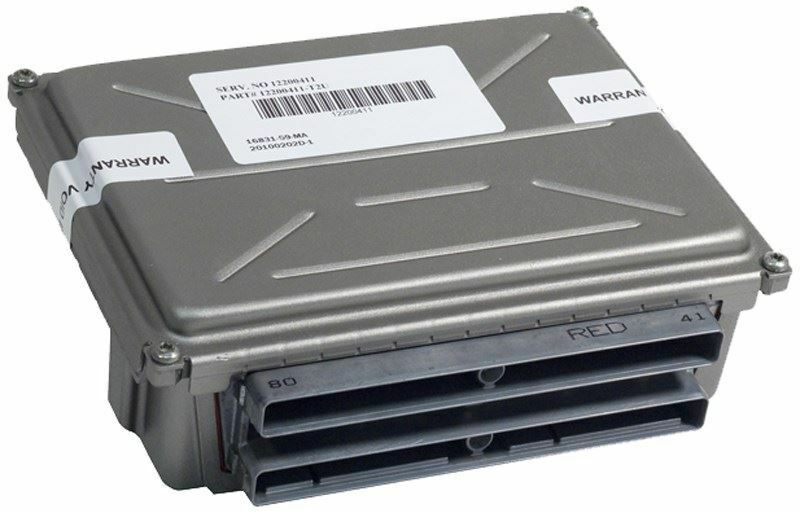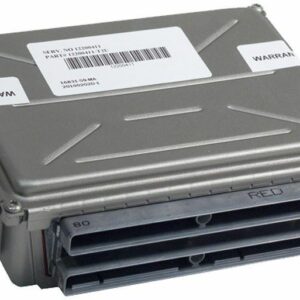Restore Your Vehicle’s Brainpower and Performance
If you’re dealing with a frustrating check engine light, poor fuel economy, or unpredictable engine behavior in your Pontiac Aztek or other GM vehicle, the culprit is often the Powertrain Control Module (PCM). As a technician with over two decades of experience under the hood, I’ve seen firsthand how a failing PCM can cause a cascade of problems that seem unrelated. This isn’t just a part; it’s the central computer managing your engine’s performance and transmission’s shifting. A faulty one can make even the most reliable vehicle a nightmare to drive.
This isn’t a generic, one-size-fits-all module from a salvage yard. We take the guesswork and hassle out of the equation. When you order, you provide us with your Vehicle Identification Number (VIN), and we program this PCM with the latest, most stable software updates directly from GM. This means it arrives at your door ready for installation, tailored specifically for your vehicle’s systems. You get a reliable fix that restores factory performance without the expensive programming fees or long wait times at a dealership.
Common Signs of a Failing GM Powertrain Module
Not sure if your PCM is the problem? In my shop, these are the classic symptoms I look for when diagnosing a potential failure. If your vehicle is showing several of these signs, a faulty module is a likely cause.
- ✔ Persistent Check Engine Light (CEL)
- ✔ Diagnostic Trouble Codes (DTCs) stored, especially P0601, P0602, P0606, or U-series communication codes.
- ✔ Unexplained drop in fuel mileage.
- ✔ Engine stalling, stumbling, or misfiring for no apparent reason.
- ✔ Harsh, erratic, or delayed automatic transmission shifting.
- ✔ Vehicle fails to start intermittently or cranks but won’t turn over.
- ✔ The cooling fans run constantly or not at all.
From the Diagnostic Bay: Solving the “Ghost” Misfire
A customer brought in a 2004 Pontiac Montana with the 3.4L V6. The complaint was a random misfire that no one could pinpoint. They had already replaced plugs, wires, and the ignition control module. The scan tool showed a misfire, but it would jump between cylinders. After checking all the wiring and grounds, I hooked up my scope to the injector and coil control signals coming from the PCM. The signals were erratic and unstable. The PCM’s internal drivers were failing under load. We installed one of these VIN-programmed modules, performed the security relearn, and the van ran perfectly. The customer avoided a costly dealer diagnosis and was back on the road the same day.
A Straightforward Guide to Your PCM Installation
Replacing the 2003-2005 Aztek PCM is a job most DIY enthusiasts can handle with basic tools. Following these steps ensures a smooth process. Always consult a vehicle-specific repair manual if you are unsure.
- Safety First: Disconnect the negative terminal from your vehicle’s battery and secure it away from the post to prevent accidental contact.
- Locate the Module: On most of these GM vehicles, the PCM is located in the engine bay, typically inside the air filter housing on the driver’s side (LH).
- Disconnect Connectors: Carefully release the locking tabs on the electrical wiring harnesses and pull them straight out from the PCM. Inspect the pins for any corrosion or damage.
- Remove the Old PCM: Unbolt the mounting brackets or clips holding the old module in place and remove it from the vehicle.
- Install the New PCM: Mount your new, pre-programmed PCM securely in place. Reconnect the wiring harnesses, ensuring they click and lock firmly.
- Reconnect Battery: Reattach the negative battery terminal.
- Perform Security Relearn: You will need to perform a simple security relearn procedure (often called a “key-on/key-off” cycle) to sync the new PCM with your vehicle’s anti-theft system. This procedure typically takes about 30 minutes and does not require special tools. Instructions are readily available online for your specific model.
Verified Vehicle Compatibility List
This module, part number 89017735, is a direct replacement for service numbers 12583827 and 12583826. It is guaranteed to fit the following makes and models. Please verify your vehicle’s options for a perfect match.
AZTEK 2003-2005
GRAND AM 2003-2005 (3.4L)
GRAND PRIX 2003 (3.1L)
MONTANA 2003-2005
BONNEVILLE 2004-2005 (3.8L)
Chevrolet:
IMPALA 2003-2005 (3.4L)
MALIBU 2003
MONTE CARLO 2003-2005 (3.4L)
VENTURE 2003-2005
Buick:
CENTURY 2003-2005
LESABRE 2004-2005
PARK AVENUE 2004-2005
RENDEZVOUS 2003-2005
Oldsmobile:
ALERO 2003-2004 (3.4L)
SILHOUETTE 2003-2004
Choosing this pre-programmed 2003-2005 Aztek PCM is the smartest way to solve complex electronic issues, restore your vehicle’s reliability, and save significant time and money.
Frequently Asked Questions
Do I need to do anything after installing this PCM?
Because this module comes pre-programmed to your VIN, no dealer flashing is required. You will only need to perform a standard vehicle security relearn procedure, which involves a series of key cycles and typically takes 30 minutes. This syncs the new PCM to your existing keys.
Where do I find my VIN?
Your 17-digit VIN can be found on your vehicle’s registration, insurance card, or on a metal plate on the driver’s side of the dashboard, visible through the windshield.
Is this a guaranteed fix for my check engine light?
This PCM will resolve any issues directly caused by a faulty module, including internal processor faults (like DTC P0601). However, a check engine light can be triggered by other failing components (e.g., sensors, wiring). Proper diagnosis is key, but a failing PCM is a very common root cause for the symptoms listed.
What if I order the wrong part?
We program the module based on the VIN you provide, which ensures compatibility. Please double-check your part number and vehicle information before ordering. Contact us if you need help confirming fitment.
Will this fix my transmission shifting problems?
Yes, in many cases. The PCM controls the transmission’s shift points and line pressure. If your transmission issues are electronic and commanded by a faulty PCM, this part is the correct solution. It will not fix internal mechanical failures within the transmission itself.



